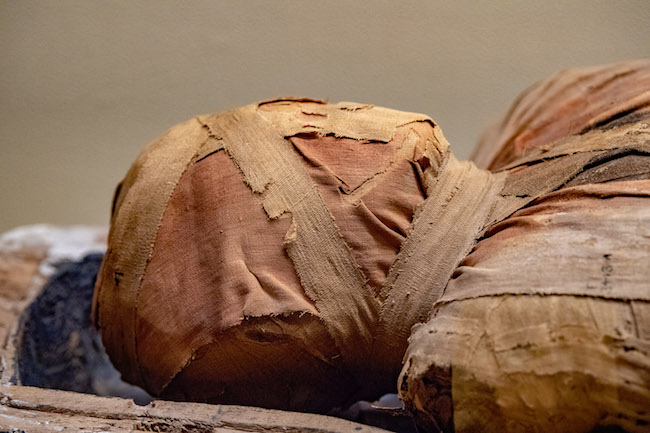Over the ages, colour pigments have been formulated from a wide variety of materials – everything from plants to insects to minerals. Unique colours excite artists and manufacturers about their potential appeal and applications. Arguably, the most unusual source was from actual Egyptian tombs. Finely-ground human and feline mummies, combined with special binding agents, produced a complex brown colour that was popular with Pre-Raphaelite artists. Painters like Eugene Delacroix appreciated how Mummy Brown’s transparent quality added a unifying hue to his canvases, enriching both shadows and skin tones.
Trade in Egyptian mummies flourished for centuries for these decomposed bodies were purported to offer medicinal benefits to the living. C. Roberson and Co., a London, England based art supply store established in 1810, was selling tubes of Mummy Brown well into the twentieth century. “We might have a few odd limbs lying around somewhere,” a company director told TIME magazine in 1964, “but not enough to make any more paint. We sold our last complete mummy some years ago for, I think, £3. Perhaps we shouldn’t have. We certainly can’t get any more.” However, once the public became aware of the pigment’s origin, the colour quickly fell from favour. And it didn’t help matters that the paint had a tendency to crack and fade over time. It does leave one wondering what circumstances led someone to believe that mummies would make a good pigment, a mystery that may never be unwrapped.
